
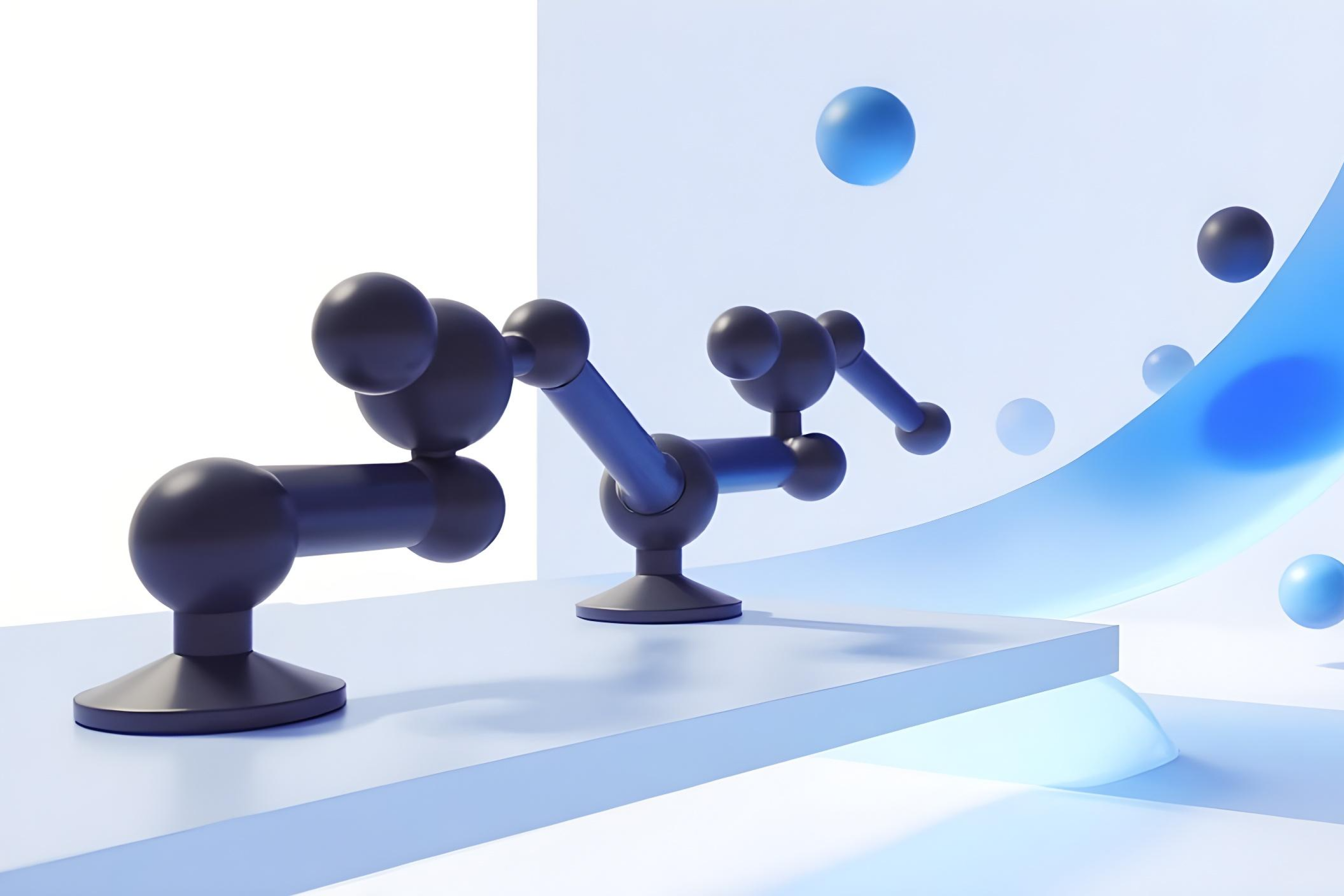
Not sure where to start with intelligent automation? You're not alone. According to Gartner's predictions, a vast majority of enterprises (85%) will implement AI agents by 2025 to boost productivity, optimize operations, and enhance customer experience. Yet many teams still wrestle with a fundamental question: What makes agentic AI workflows different from the RPA tools we've been using for years?
Automation is evolving from static, rule-based scripts to dynamic AI-driven agents that reason through problems, execute tasks, and adapt on the fly. For businesses serious about efficiency, this changes the entire playbook.
Traditional automation has always been about following rules. Set up the script, define the triggers, watch it run. It worked — until it didn't. When processes changed, when exceptions popped up, or when unstructured data entered the picture, those rigid systems hit a wall.
RPA emerged as the first breakthrough, letting teams automate interface-level tasks without deep system integration. The numbers tell the story: 66% of businesses have automated at least one process, but 45% of work activities remain untapped. Why? Because RPA can only handle what it's explicitly programmed to handle.
IBM and Morning Consult surveyed 1,000 enterprise developers — 99% are exploring or developing AI agents. The message is clear: 2025 is shaping up to be the year of the agent.
Let's get specific about what we're actually talking about.
AI Agents: Autonomous software systems that use large language models (LLMs) and machine learning to perceive their environment, make decisions, and take actions without constant human oversight. Unlike RPA bots that follow scripts, AI agents reason through problems, learn from outcomes, and adapt their approach.
AI Agent Workflows: Multi-step business processes where these autonomous agents handle complex tasks end-to-end. They're not just automating single actions — they're orchestrating entire sequences of work, making contextual decisions at each step, and adjusting their strategy based on what they learn.
Think of it this way: RPA is like a factory robot doing the same motion repeatedly. An AI agent is like a skilled assistant who understands the goal, figures out the best approach, and handles curveballs without asking for help every time something unexpected happens.
The fundamental difference between RPA and AI agents is the way how they approach to problem-solving:
Autonomous decision-making vs. rule-following: RPA uses software bots to complete repetitive, structured tasks using set rules. These bots mimic what a human does on a computer, such as clicking, typing, copying, pasting and processing data. AI agents, by contrast, analyze context and choose the best path forward based on reasoning and learning.
Real-time adaptation and learning: Unlike RPA, agentic AI operates beyond strict rules, enabling it to address complex, unpredictable scenarios. When your data source changes format, RPA fails. AI agents figure it out and keep going.
Context awareness and multi-step reasoning: RPA sees isolated tasks. AI agents see the bigger picture. When an AI agent processes a customer complaint, it doesn't just categorize it — it understands the customer's history, detects urgency from language patterns, checks inventory for solutions, and maps out a resolution strategy. It can break down "resolve this shipping issue" into discrete steps: verify the order, track the package, identify the delay cause, calculate compensation, and draft a personalized response. Each step informs the next.
Here's an example that illustrates the difference: A traditional chatbot escalates any issue it can't match to its script. An agentic IT support system? It asks clarifying questions, runs diagnostics, accesses multiple systems, and tries different approaches — basically, it troubleshoots like a skilled technician would, without immediately passing the buck.
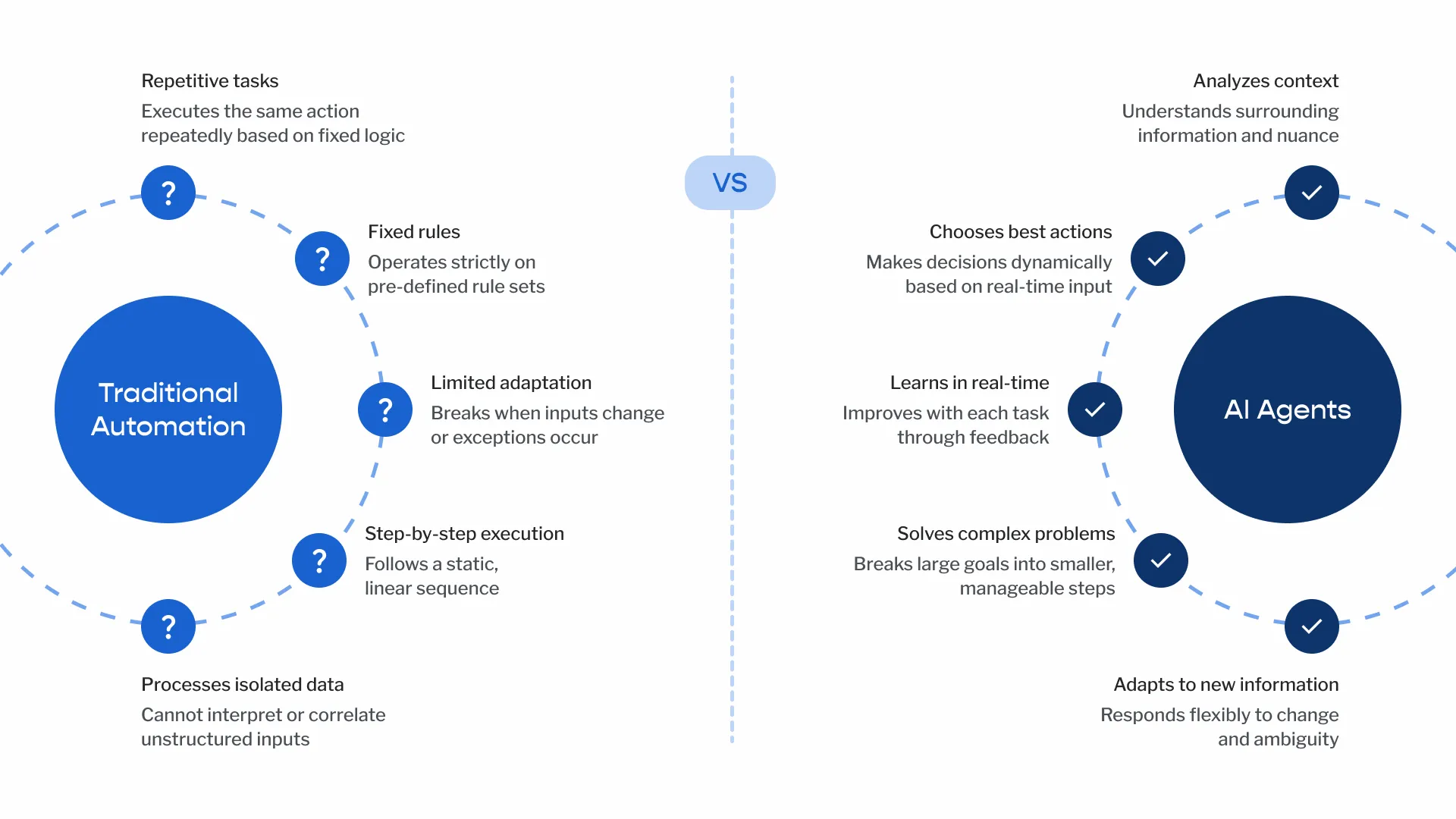
Every AI agent workflow operates through a sophisticated cycle of capabilities:
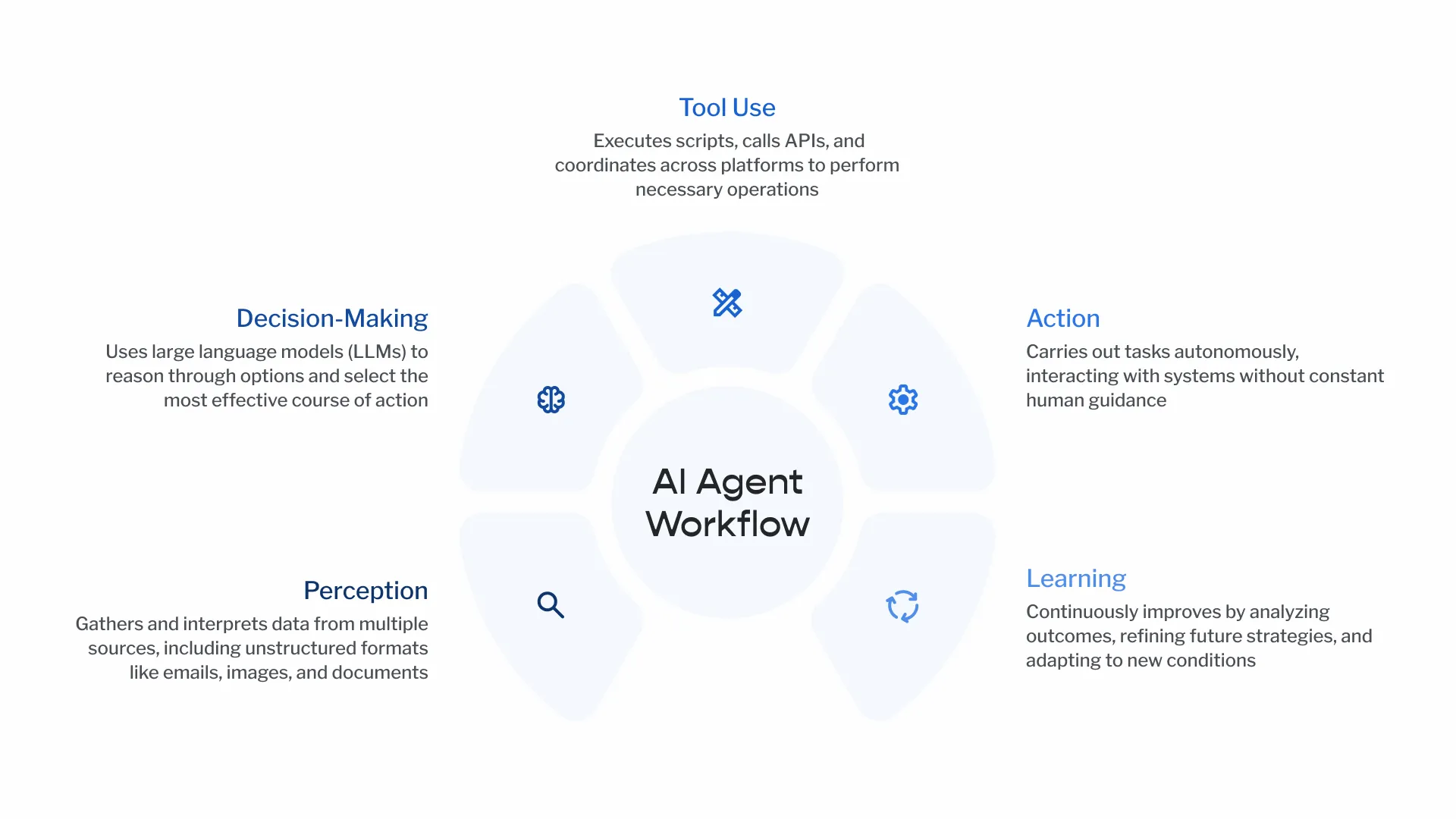
Consider an inventory management scenario: An AI agent monitors stock levels across multiple warehouses, analyzes sales patterns and seasonal trends, predicts demand spikes, decides when to reorder via API calls, and then adjusts its reorder thresholds based on actual sales data. No human intervention needed — and it gets smarter with each cycle.
AI agents outperform traditional RPA by handling complexity, change, and unstructured data with ease. Their ability to adapt, learn, and orchestrate tasks intelligently makes them a game-changer for modern automation.
RPA is best suited for highly structured, rule-based tasks where inputs and processes are clearly defined and well-defined. Need to handle a new document format? Time to reprogram. However, AI agents learn and adapt on the fly. Take Wiley, for example, has seen a more than 40% increase in case resolution with Agentforce, leaving their old bot in the dust.
The flexibility extends even further when we are talking about handling a massive amount of unstructured data. Unlike rule-based systems like RPA, Autonomous AI Agents leverage machine learning, natural language processing, and cognitive capabilities to handle complex, dynamic tasks in real time. AI agents can process emails, interpret documents, analyze images, and understand natural language — capabilities that would break traditional RPA.
Here's where the economics become compelling. Organizations using Gen AI–enabled customer service agents saw a 14% increase in issue resolution per hour and a 9% reduction in time spent handling issues.
But the real efficiency gains come from parallel processing and multi-agent orchestration. Major platforms are racing to bake AI agents directly into their software. Take Salesforce, they've built Agentforce right into their platform so users can create agents that manage complex processes end-to-end, no coding required.
Banking implementations show the potential: loan conversion processes reducing from 60 to 10 minutes per batch and remittance comparison workflows decreasing from 150 to 25 minutes per batch, both achieving ROI periods of 0.33 to 0.67 months.
Perhaps the most critical advantage is that AI agents don't break when the world changes. GUI-based RPA bots must be reprogrammed when software interfaces change. AI agents, in contrast, can adapt more flexibly to handle UI changes.
This resilience extends beyond technical changes. AI agents take automation beyond intelligent workflows; they handle the complex, ever-changing processes that rule-based systems can't touch. When regulations shift, customer needs evolve, and market conditions change, AI agents adapt their approach rather than generating errors.
Let's cut through the confusion with a clear comparison based on real implementation data:
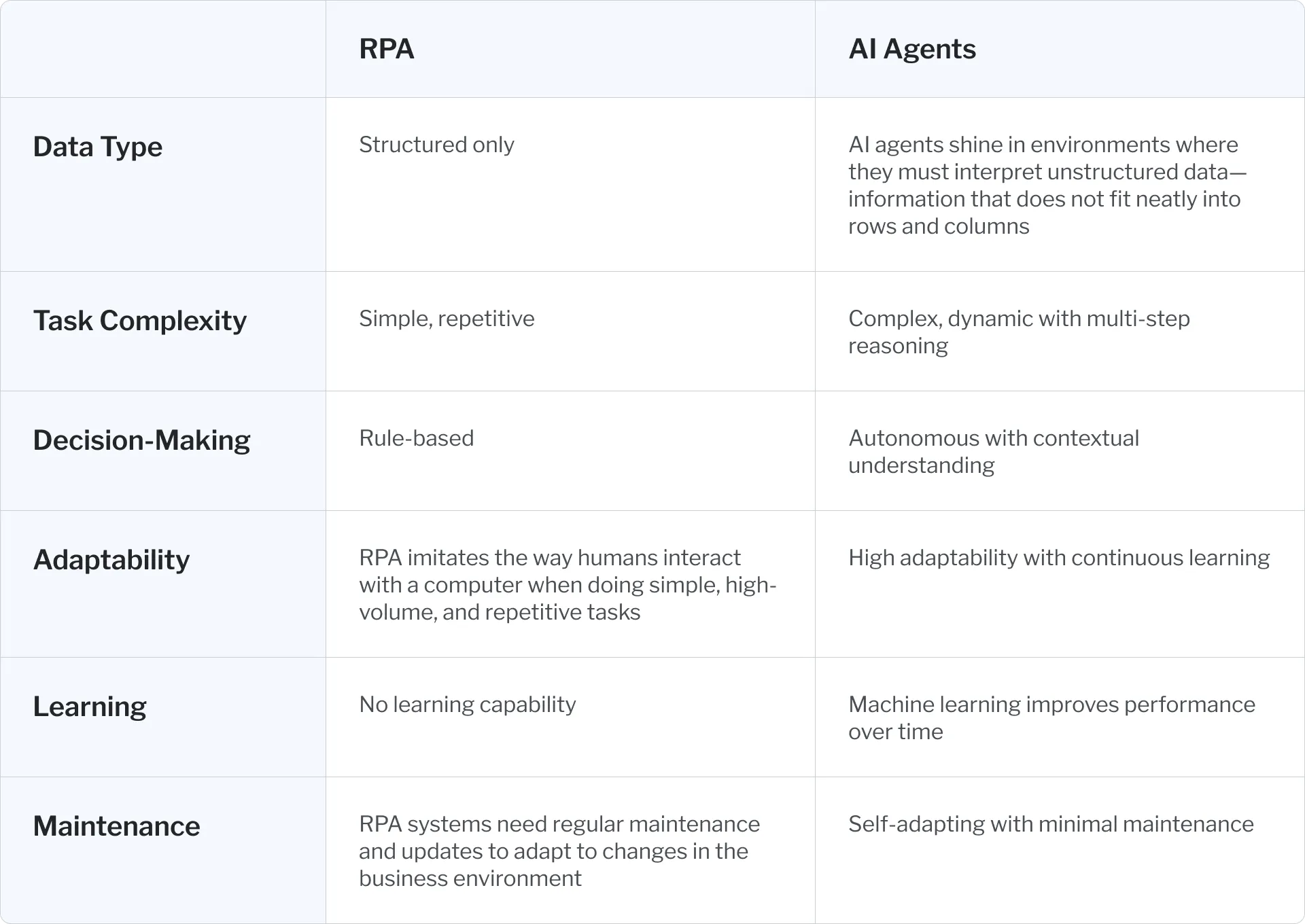
The market tells a compelling story about where businesses are placing their bets. The AI Agents Market size was valued at USD 5.25 billion in 2024 and is projected to grow to USD 52.62 billion by 2030 at a CAGR of 46.3% AI Agents Market Size & Share Analysis, Growth Report - 2030. However, what matters more than the billions is that 74% of organizations say their investments in Gen AI and business automations have already met or exceeded expectations. Even more telling, 63% plan to increase that investment by 2026 15+ AI Agents Statistics You Need to Know in 2025.
The specific returns are impressive:
Organizations aren't throwing money at a trend. They're investing because AI agents deliver measurable impact, and they're just getting started.
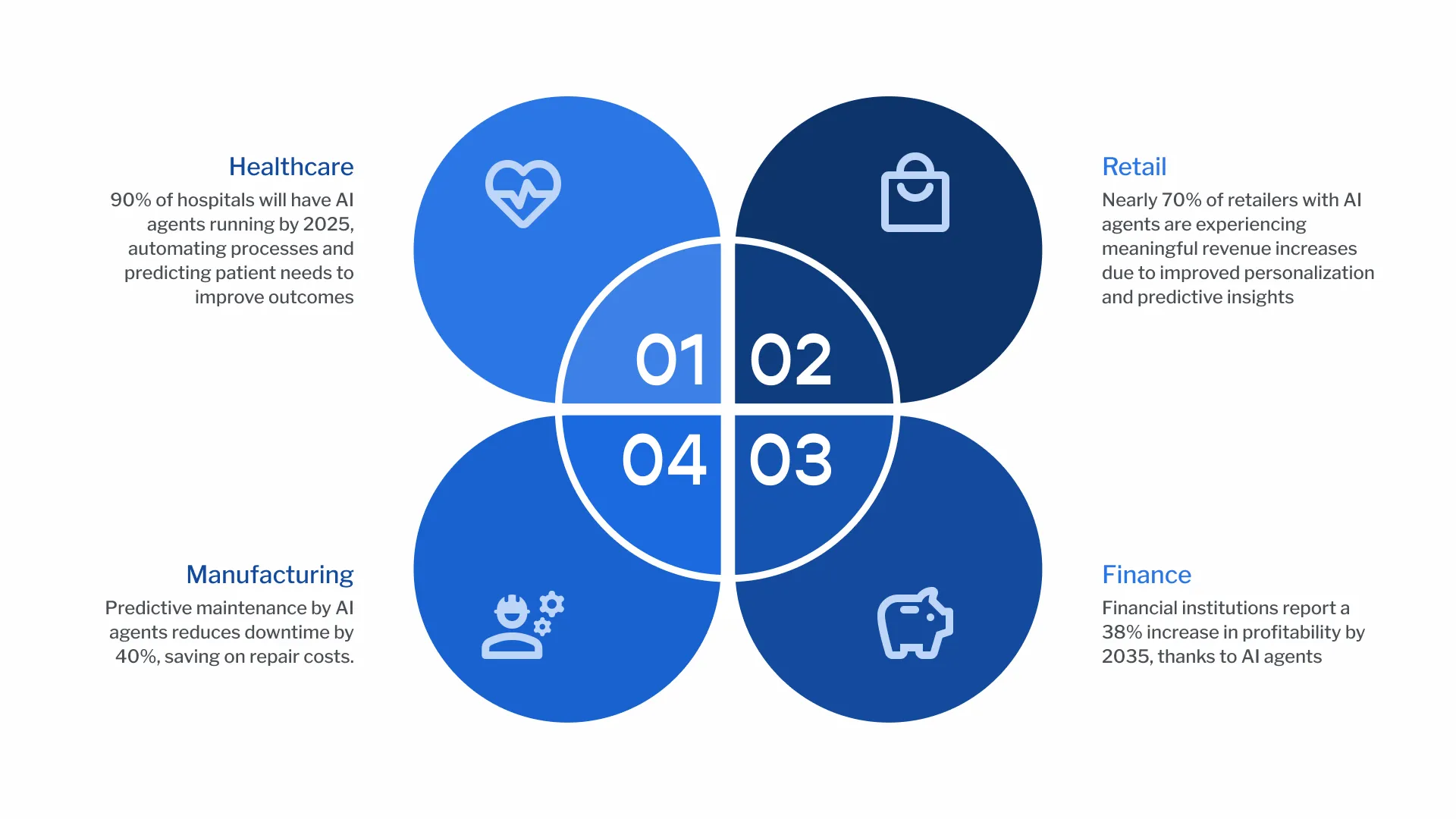
Healthcare: 90% of hospitals will have AI agents running by 2025, automating processes and predicting patient needs to improve outcomes. AI agents are already achieving 97% accuracy rate in CT image processing for plaque detection, aiding in the early diagnosis of heart conditions.
Retail: Nearly 70% of retailers with AI agents are experiencing meaningful revenue increases due to improved personalization and predictive insights. These systems analyze customer behavior in real-time, adjust inventory, and personalize experiences at scale.
Finance: Financial institutions report a 38% increase in profitability by 2035, thanks to AI agents. From fraud detection to loan processing, AI agents handle complex financial decisions while maintaining compliance.
Manufacturing: Predictive maintenance by AI agents reduces downtime by 40%, saving on repair costs. Companies like Siemens and GE leverage AI agents to monitor equipment and schedule maintenance before failures occur.
Let's be honest — RPA isn't obsolete. RPA can handle the structured, repetitive tasks, while AI agents can take on the cognitive, unstructured tasks. For high-volume data entry, standardized report generation, or simple system-to-system transfers, RPA remains cost-effective and reliable.
The key is understanding the limitations. Well, writing a robot to mimic human behavior is not always the most efficient way to automate. If APIs exist, direct integration often beats RPA. But for legacy systems without modern interfaces, RPA bridges the gap.
Organizations turn to AI agents when facing:
The shift from RPA to AI agents represents more than a technology upgrade — it's a fundamental change in how we think about work itself. Marc Benioff (co-founder at Salesforce) describes this as a "digital workforce" where humans and AI agents work together to achieve customer outcomes.
We've seen too many organizations focus on the flashy AI capabilities while missing the fundamentals. Training data quality is 80% of the game. Integration readiness determines success. And having clear use cases that drive real value, not just cool technology.
By 2028, 33% of enterprise software applications will include agentic AI, up from less than 1% in 2024, enabling 15% of day-to-day work decisions to be made autonomously. Organizations starting now aren't just automating tasks — they're building intelligent systems that compound competitive advantages over time.
Ready to Make That Leap?
Request a free AI Workflow Audit, and our Empha team will identify one high-impact process you can automate with an AI agent.
We’d love to bring your ideas to life.
Tell us what you’re thinking — and we’ll help shape it.

AI automation means using large language models (like GPT-4) to handle repeatable tasks inside your business. We design and build custom agents that can qualify leads, summarize content, route tickets, trigger workflows, or power internal copilots.

Not at all. While we specialize in building intelligent systems, we also offer full-service UX/UI and product design — from discovery to delivery. Many of our clients come to us purely for design support, with or without AI.

We collaborate with startups, scale-ups, and enterprise teams across fintech, SaaS, healthcare, e-commerce, logistics, and more. Whether you’re building your first product or scaling a complex system, we adapt to your stage and stack.

Absolutely. We run UX audits, onboarding redesigns, and complete product design engagements. Whether you're looking to clean up a dashboard, increase activation, or launch a new feature — we’ve got the design depth to support it.

Yes — that’s the core of what we do. We build agents that connect directly to your tools (Slack, Notion, HubSpot, CRMs, internal platforms), automate actions across them, and fit how your team already works. No need to change your stack.

No — we design every system to be maintainable without in-house ML engineers. We handle the technical setup, logic, and integrations, and offer optional support plans to monitor and optimize performance post-launch.

That’s totally fine. You can engage us for standalone UX/UI work, product discovery, or AI automation — or combine them. We’re built to plug into your priorities and scale with your roadmap.